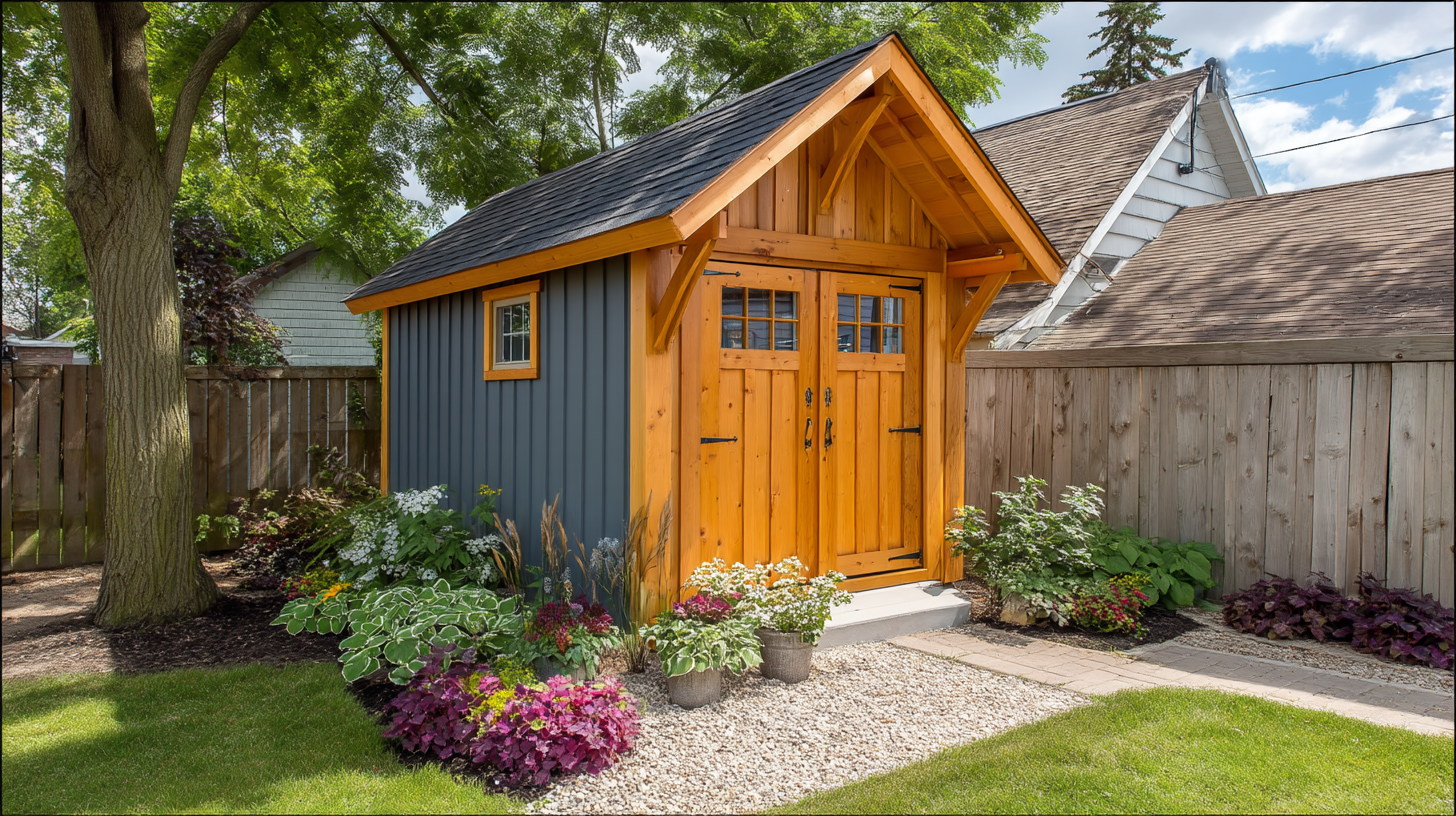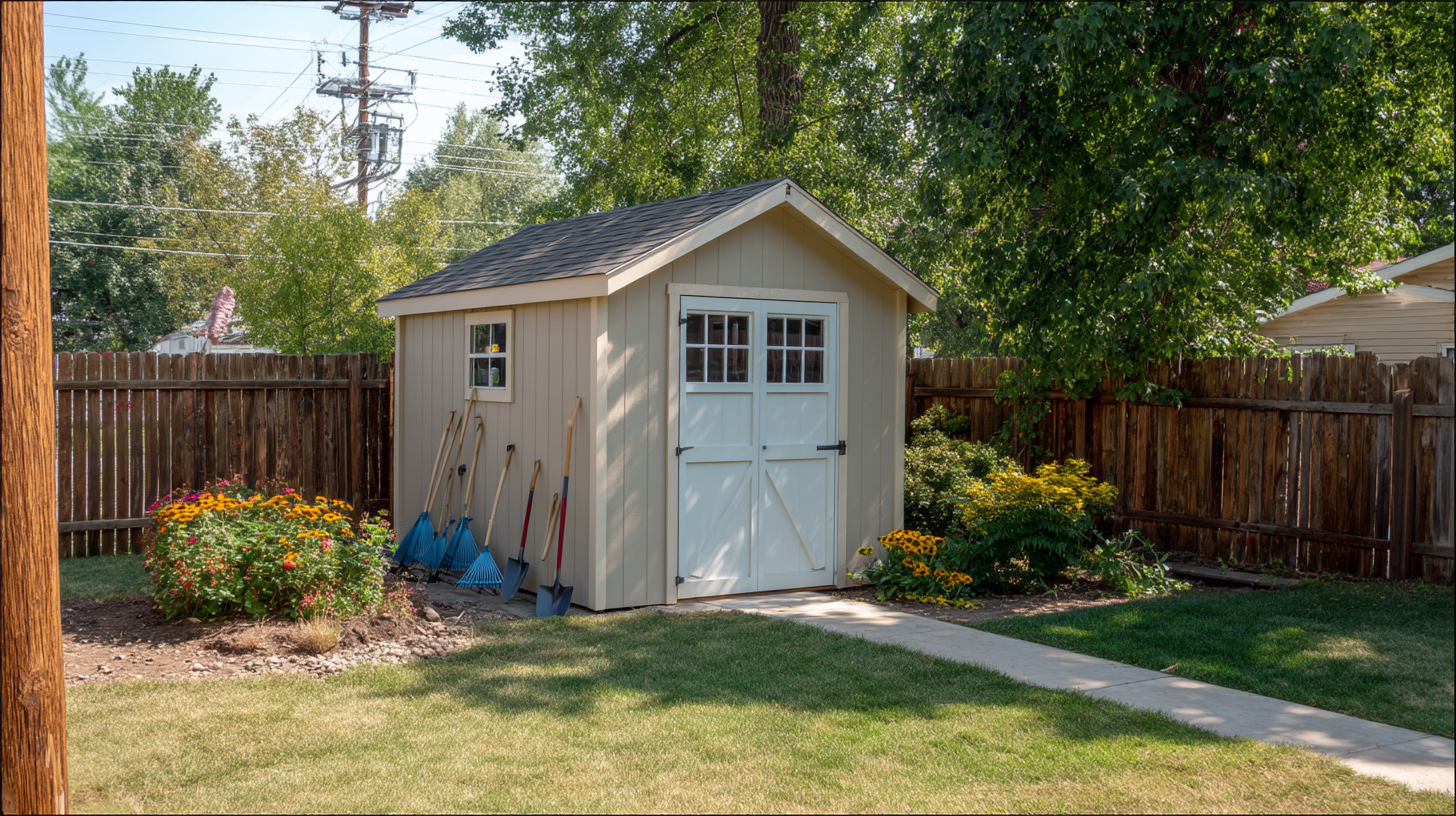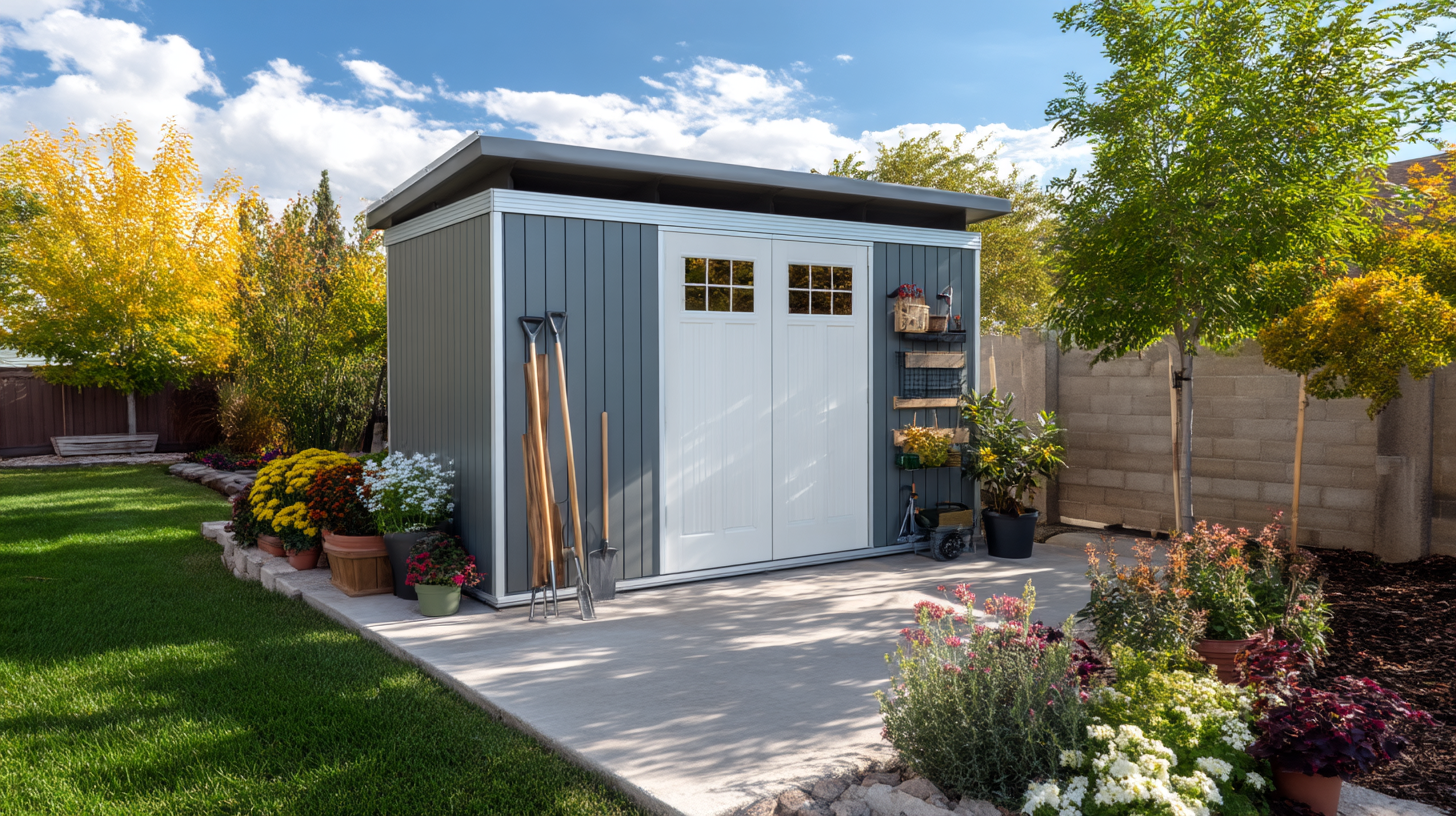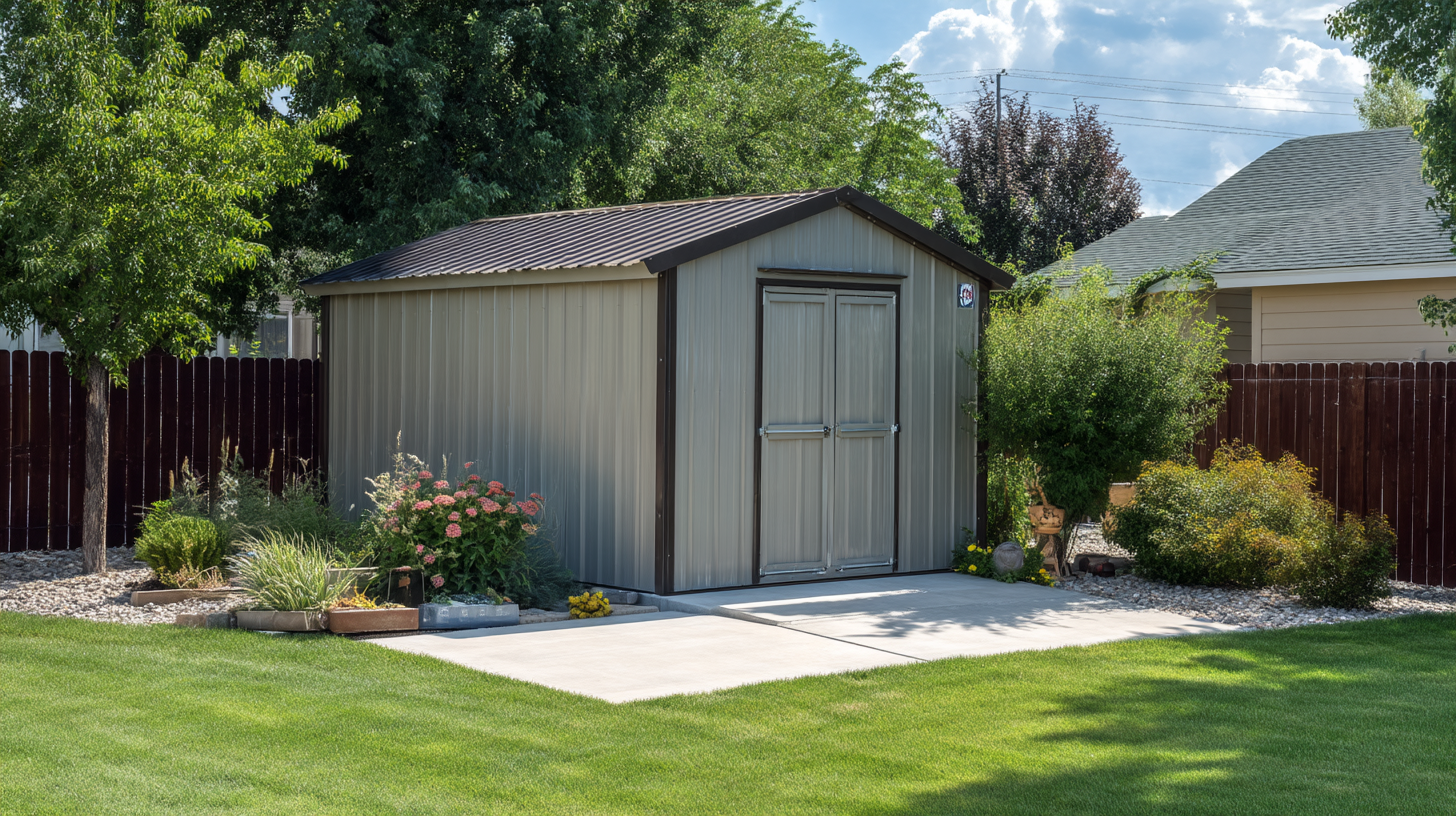Partnered with #1 ADU Builders
Contact Golden State
Drop us a line! We look forward to discussing your next project with you!
Cut the chase! Schedule a face-to-face virtual meeting with us today to dive into your project's next steps.
For our returning clients, experience our streamlined, contact-free project proposal process. Simply fill out our short project questionnaire, and we'll deliver your project proposal within 72 hours.
Contact Us:
Follow Us:

- Golden State Design & Engineering
- Comment 0
Do I Need a Permit to Build a Shed in California: A Complete Guide
At Golden State Design & Engineering, we understand that “do I need a permit to build a shed” is one of the most common questions clients ask. With countless variables like shed size, utilities, intended use, and local building codes, it is easy to get overwhelmed. This comprehensive guide walks you through everything, from statewide rules and local government nuances to storage shed exceptions and the full permitting process so you can avoid pitfalls and build with confidence.
The Most Common Questions First Answered

Do I Need a Shed Permit or Building Permit?
To determine whether you need a permit, contact your local building department first. In most areas, a detached storage shed 120 square feet or less, non-habitable and free of utilities, does not require a building permit. That said, permit requirements vary depending on local regulations and how you intend to use the structure. Remember, shed permit rules can vary widely because sheds vary in size, purpose, and complexity.
How Much Does a Shed Permit Cost?
Shed permit cost depends on your local county or city limits. Residential shed permits generally range between $50 and $200 depending on building permit application complexity, structure size, and local fee structure. In other regions, fees may reflect square footage, permit requirements, or project valuation.
Why Visit Your Local Building Department or Government Office?
Local building codes vary widely across counties, cities, and townships. Even if the California statewide threshold is 120 square feet for exemption, your city or local government may impose lower square-foot requirements or stricter setback rules. That means own research via government websites or a quick call to your local building department is essential. It is plain wrong to assume that all sheds are treated the same everywhere.
Section 1: Understanding Permit Requirements and When You Need a Permit

Size, Square Feet, and More Than One Story
Shed permit thresholds typically use square feet and height to determine exempt status. In most areas, sheds under 120 square feet are generally exempt. Some jurisdictions allow up to 200 square feet without a permit. Anything more than one story or over height limits, usually 8 to 12 feet, likely requires a building permit.
Intended Use: Storage Shed vs Living Quarters
Sheds used solely for storage usually qualify for exemption. But if your project is intended as a living space, office, workshop, tiny house, or other building that becomes habitable or full-time living space, you will need to apply for permit applications and obtain approvals, zoning or ADU permits, and possibly structural plans. Such structures are always subject to stricter regulations.
Utilities and Code Requirements
Once you incorporate electrical wiring, plumbing, or mechanical systems, you must obtain an electrical permit or plumbing permit. These trigger stricter building codes, inspections, and structural requirements even for small sheds.
Setbacks and Property Line Regulations
Even if a permit is technically not required, your shed must obey setback rules. Setbacks are the required distances from your property lines and other structures. These location-based restrictions are enforced at the local county or city level to maintain safety and neighborly boundaries. Violating setbacks can result in permit denial or forced relocation.
Section 2: How Permit Requirements Vary by Location

Statewide Baseline vs Local Regulations
California sets a general baseline that sheds under 120 square feet, non-habitable and nonsubstantial, can be built without a building permit. However, local government authorities such as cities, local counties, or local townships may impose stricter rules. The result is that some areas may require permits even for smaller storage sheds depending on their local building codes and zoning.
Examples of Variations
- Some areas allow up to 200 square feet without a permit, while others limit exemption to 120 or even 100 square feet.
- Height and story limitations often apply, as single-story sheds under 12 feet may be exempt, whereas more than one story or higher sheds aren’t.
- Local variances may apply depending on proximity to property line, easements, or scenic zones. No two cities treat these thresholds the same.
Section 3: Full Permitting Process for Sheds That Need Approval
Step-by-Step Overview
- Own research at government websites or contact your local government office, township, or county building department to determine permit requirements.
- Prepare your plan including shed dimensions, location on your property (with property line distances), foundation type, utilities, and intended use.
- Complete the building permit application or zoning permit forms as required by your local building department.
- Submit the building permit application and pay the shed permit cost.
- Await review, obtain approval, then move forward with construction.
- If utilities are included, be prepared to schedule inspections.
What to Include in the Application Form
- Completed application form from your local building department.
- Site plan showing the structure’s location relative to property lines.
- Construction plan or elevation drawings.
- Explanation of intended use (storage vs living space).
- Structural or utility details, if applicable.
- Payment of permit fees.
Section 4: Risks of Skipping the Permitting Process

Skipping the permitting process may save time now but carries serious risks. You may receive a stop-work order, substantial fines, be required to remove the new shed, encounter insurance issues, or have complications when selling your property. It is simply not worth the long-term consequences to skip permit requirements.
Section 5: Why Golden State Design & Engineering Can Help
We guide clients through the permitting process from start to finish. Whether you are building a simple storage shed or planning a backyard office with utilities, we conduct code research, prepare site and permit plans, assist with submissions, and ensure your structure complies with local building codes. Our expert team handles the permitting process so your project meets code, stays on budget, and avoids costly problems.
Frequently Asked Do I Need a Permit to Build a Shed Questions
Can I build a storage shed without a permit?
Yes, under certain conditions. If it is under 120 square feet, non-habitable, has no utilities, and meets your local setback requirements, you may not need a building permit. However, always confirm with your local building department.
What is the maximum shed size that doesn’t need a permit?
That depends on your location. While many jurisdictions allow up to 120 square feet without a permit, some allow up to 200 square feet. Check local building regulations to be sure.
Do I need an electrical permit for lighting in my shed?
Yes. Adding electrical connections, lighting, or outlets requires both a building permit and an electrical permit. This brings your shed under full code requirements.
Does a deposit or shed permit cost vary?
Yes, fees vary based on local building department rules. Residential permit costs typically range from $50 to $200. More complex sheds or areas with higher fee structures may cost more.
Can tiny houses or living quarters built like sheds need permits?
Absolutely. If your shed becomes a tiny house or living space, full compliance with residential building codes is required, including permits for structure, plumbing, electrical, and occupancy. Such structures are always subject to inspection and approval.
Conclusion
As you consider “do I need a permit to build a shed,” the key is clarity. Whether your project is a modest storage shed or a habitable space, permit requirements vary by size, height, utilities, intended use, and local building codes. Skipping permits may seem easier in the short term, but it risks fines, removals, and legal headaches.
Golden State Design & Engineering is here to help you navigate the permitting process confidently. From code research and design to permit applications and inspections, we ensure your shed project is compliant, professional, and built to last.
Ready to start? Contact us to get your shed project permitted the right way.
#NAICS’s:
- 541310 Architectural Services &
- 541330 Engineering Services
DUNS NO:
- 119132267
#SIC’s
- 8712 Architectural Services &
- 8711 Engineering Services
Cage #
- 9R4L5
#UNSPSC’s:
- 81101500, 81101502, 81101505, 81101508, 81101526, 81101533, 81101522

